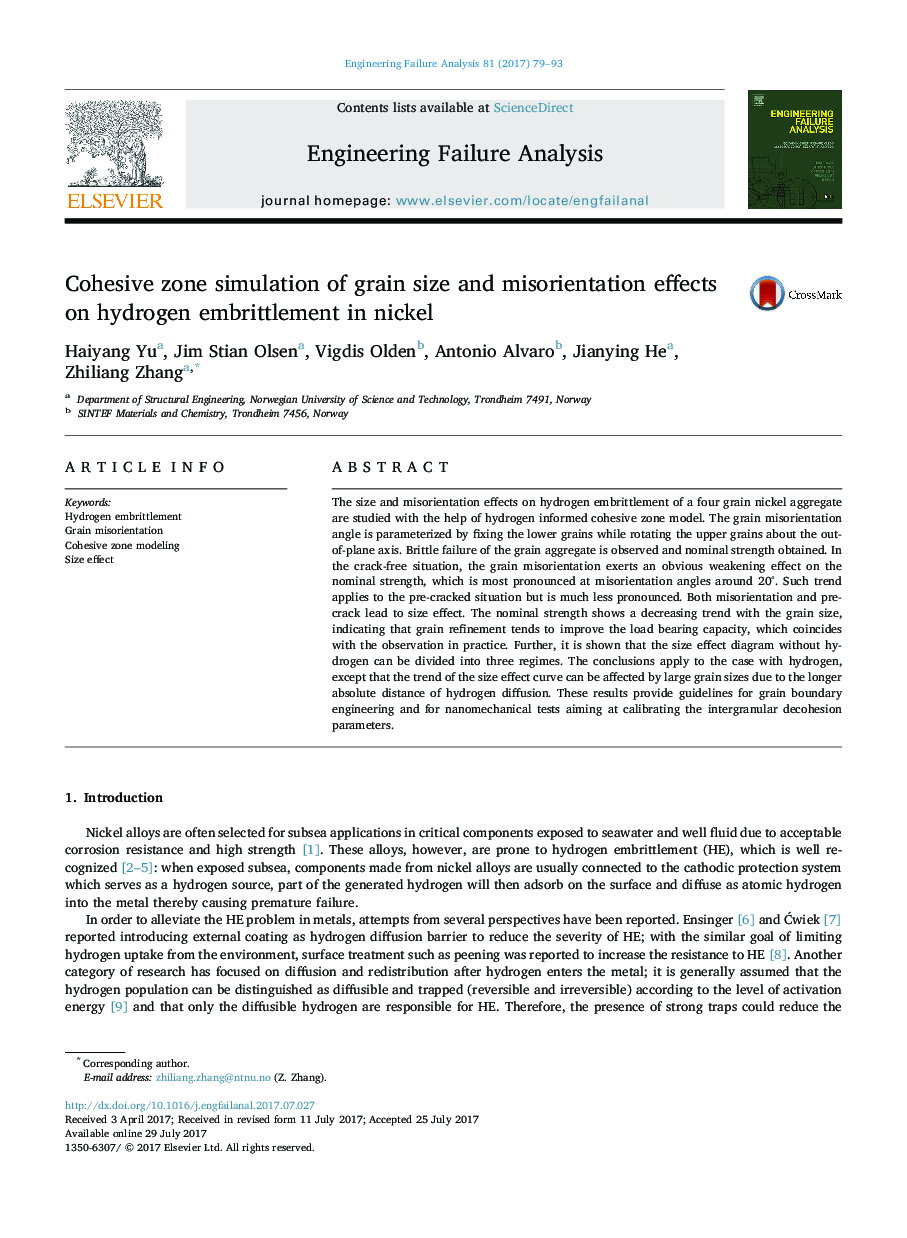| Article ID | Journal | Published Year | Pages | File Type |
|---|---|---|---|---|
| 5013457 | Engineering Failure Analysis | 2017 | 15 Pages |
Abstract
The size and misorientation effects on hydrogen embrittlement of a four grain nickel aggregate are studied with the help of hydrogen informed cohesive zone model. The grain misorientation angle is parameterized by fixing the lower grains while rotating the upper grains about the out-of-plane axis. Brittle failure of the grain aggregate is observed and nominal strength obtained. In the crack-free situation, the grain misorientation exerts an obvious weakening effect on the nominal strength, which is most pronounced at misorientation angles around 20°. Such trend applies to the pre-cracked situation but is much less pronounced. Both misorientation and pre-crack lead to size effect. The nominal strength shows a decreasing trend with the grain size, indicating that grain refinement tends to improve the load bearing capacity, which coincides with the observation in practice. Further, it is shown that the size effect diagram without hydrogen can be divided into three regimes. The conclusions apply to the case with hydrogen, except that the trend of the size effect curve can be affected by large grain sizes due to the longer absolute distance of hydrogen diffusion. These results provide guidelines for grain boundary engineering and for nanomechanical tests aiming at calibrating the intergranular decohesion parameters.
Related Topics
Physical Sciences and Engineering
Engineering
Industrial and Manufacturing Engineering
Authors
Haiyang Yu, Jim Stian Olsen, Vigdis Olden, Antonio Alvaro, Jianying He, Zhiliang Zhang,
